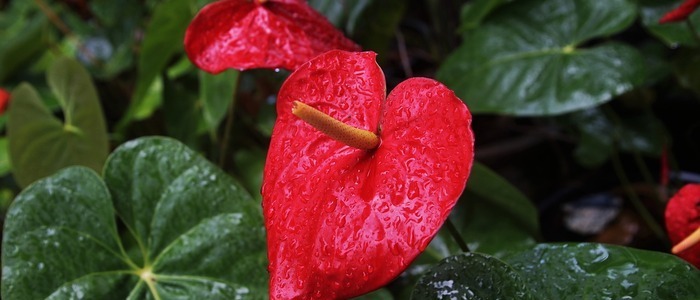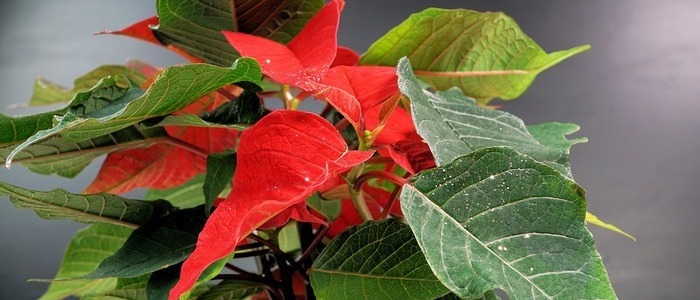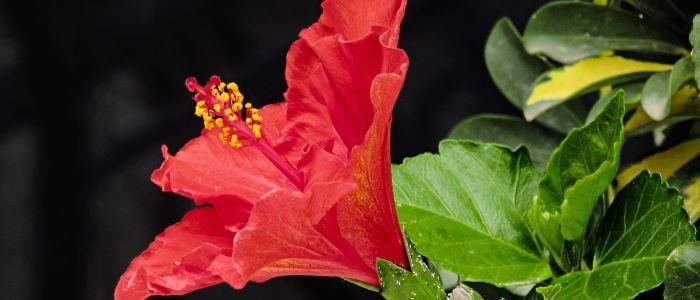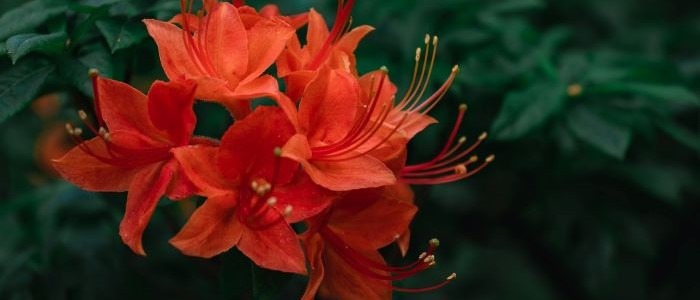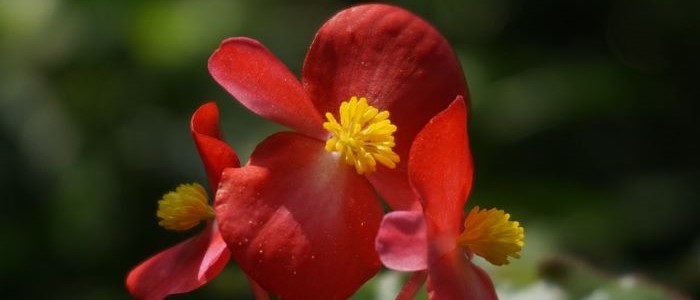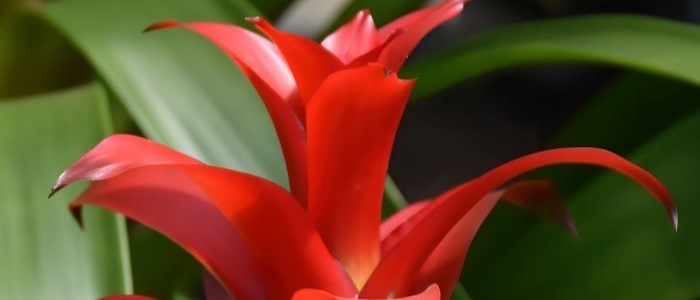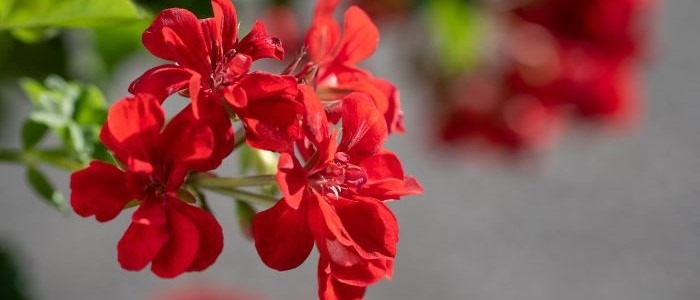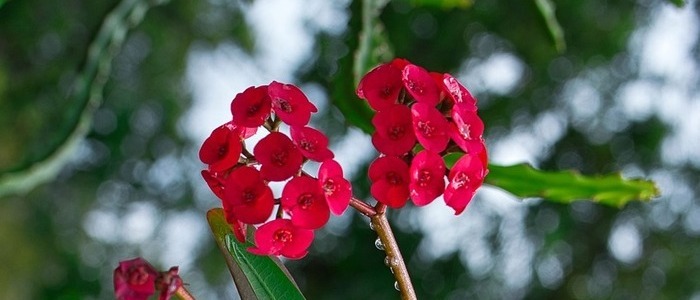The Ixora Coccinea is a stunning flowering shrub that can make a wonderful addition to any outdoor area. Native to India, Indonesia, Malaysia, and China, it produces four petaled flowers in an array of captivating colors such as red, white, yellow and pink. This small shrub can reach up to 6 feet in height when fully grown and requires full sun for successful growth. It must also be regularly pruned to maintain its beautiful shape and structure.
Not only is the Ixora Coccinea visually appealing but it has many practical applications as well! Its vibrant hues make it a great choice for adding some color to an outdoor space or creating privacy screens along boundaries with its attractive foliage. Additionally, due to its smaller size it can be used as an ornamental accent piece within a larger planting scheme or simply enjoyed on its own.
To ensure healthy growth for your Ixora Coccinea Plant you must understand the best practices for caring for it correctly. This includes providing the correct soil conditions and fertilization throughout the year in addition to adequate water levels. Pruning should also be done appropriately so that any damage or distortions of growth patterns are avoided – allowing your plant’s beauty to remain intact!
With all these considerations taken into account you will have no problem keeping your Ixora Coccinea Plant thriving! In this section we have explored how to best care for this amazing pink house plant so that you may get the most out of this beautiful floral specimen!
Ixora Coccinea Plant Frequently Asked Questions
Is there a watering schedule for the ixora coccinea plant?
Yes, During the growing season, watering once or twice a week is usually sufficient, while in winter, when the plant is dormant, watering can be reduced. It is always best to monitor the soil moisture levels and adjust the watering frequency accordingly.
Is the Ixora coccinea a house plant?
Yes, Its vibrant, showy flowers and glossy green leaves make it a popular choice for indoor gardens. With proper care and maintenance, the Ixora coccinea can thrive in containers and bring a touch of tropical beauty to any home.
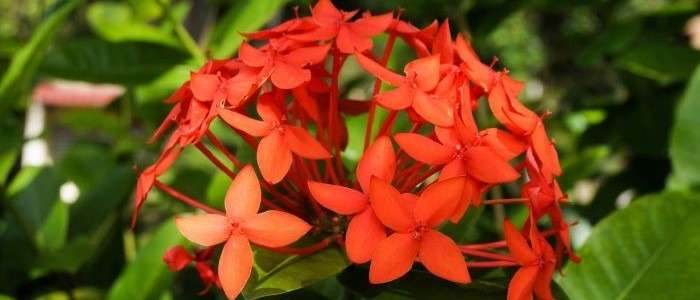
Suitable Soil For An Ixora Coccinea Plant
The Ixora Coccinea plant, also known as the Flame of the Woods, requires specific soil conditions to thrive. Its ideal environment is a well-draining, slightly acidic soil with a pH between 5.5 and 6.5. The soil should be light and sandy, with enough organic matter such as compost or peat moss added to allow for proper drainage and aeration. It is important to ensure that the soil does not become waterlogged when watering your Ixora Coccinea plant, as this could lead to root rot and other diseases.
Adding mulch around the base of your Ixora Coccinea is beneficial because it helps retain moisture in the soil while providing additional nutrients for healthy growth. Organic matter in the form of compost can also help maintain nutrient levels in the soil; however, make sure not to overdo it as this can cause an imbalance which can lead to poor growth or even death. Additionally, regular watering is necessary for optimum health as dry conditions will cause wilting or leaf drop.
It’s important to monitor your Ixora Coccinea plant’s environment regularly in order to ensure that it has all of the essential elements needed for healthy growth and vibrant flowers. If you notice any signs of distress such as stunted growth or discolored leaves, test your soil’s pH level and add amendments accordingly. With these tips, readers will be able to create a thriving environment for their Ixora Coccinea plant and enjoy its vibrant flowers!
Propagating Ixora Coccinea or Flame of The Woods Plant
Propagating an Ixora Coccinea plant is a straightforward process that will enable readers to create beautiful plants with vibrant flowers. The three main methods of propagation are by cuttings, layering, and division. The best time to take cuttings is during the spring or summer months when the plant is actively growing. Cuttings should be taken from new growth and should be about 6 inches long. They can then be planted in moist soil and placed in a warm, shady spot until they have rooted.
Layering is another method of propagation which involves taking a stem from an existing plant and burying it in the soil so that it takes root. This method works best when done during late winter or early spring as this encourages new growth faster than other times of year. Once the roots have formed, the stem can be carefully removed from the mother plant and replanted elsewhere with a rich soil mix.
Division is also an effective way to propagate an Ixora Coccinea plant. This method works by dividing up one existing bush into several smaller ones, which can then be replanted separately in prepared soil beds or containers for further growth. It’s important not to damage any of the roots when doing this; gently tease them apart instead of cutting through them with pruning shears or knives.
When replanting propagated plants, ensure that you prepare their soil bed well beforehand by adding plenty of organic matter such as compost or manure and ensuring that it has good drainage capabilities so that your plants don’t suffer from sitting in waterlogged conditions for extended periods of time. With these tips on propagating your own Ixora Coccinea plants, readers will be able to enjoy vibrant blooms throughout their gardens for years to come!
Tips for Pruning the Ixora Coccinea Plant
Pruning an Ixora Coccinea plant is an essential part of its care. Regular pruning helps to keep the plant healthy and encourages growth, resulting in thicker foliage and more vibrant flowers. When pruning your Ixora Coccinea plant, it is important to use clean, sharp pruning shears and take care not to remove too much at once. In addition, any dead or diseased branches should be removed quickly to prevent them from spreading.
When pruning your Ixora Coccinea plant, consider which shoots need trimming. Remove any dead shoots that have no leaves and those that have grown out of proportion with the rest of the shrub or are crossing over other branches. Also look for any weak branches that could snap off under their own weight due to their thinness or bending. These should also be trimmed away.
Additionally, you can prune back some of the longer stems so that they don’t become too woody or leggy in appearance. Finally, you can cut away older flowers after they have bloomed in order to promote new growth and encourage new flower buds for the next season.
It is important to note that when pruning your Ixora Coccinea plant, you should never remove more than one-third of the total amount of foliage as this can shock the plant and cause it to become stressed or unhealthy if done too often or too aggressively. With the right care and attention, however, regular pruning can help ensure your Ixora Coccinea remains healthy and beautiful for years to come!
Fertilizing Tips to Keep Your Ixora Coccinea Plant Healthy
Fertilizing an Ixora Coccinea plant is an important part of keeping it healthy and vibrant. To achieve the best results, readers should choose a balanced fertilizer with equal parts nitrogen, phosphorus and potassium, as this will provide the essential nutrients for growth. It is important to apply the fertilizer evenly around the base of the plant and not directly on its stems or leaves.
During the growing season, fertilizers should be applied every 4-6 weeks to ensure that your Ixora Coccinea has enough nutrition. In addition, readers should flush their soil regularly with water to prevent salt buildup from fertilizers which can damage your plants over time. Too much fertilizer can also cause burning of roots, so it is important to use only what is recommended for your particular plant and soil type. Organic fertilizers are preferable as they are considered less harsh than synthetic options.
With these tips, readers can ensure their Ixora Coccinea plant receives all the necessary nutrients needed for healthy growth and beautiful blooms. By providing proper nourishment in combination with appropriate pruning techniques and environment conditions, readers will be able to enjoy vibrant flowers in their garden throughout the year!
Common Pest and Problems When Growing Ixora Coccinea
Caring for an Ixora Coccinea plant can be a rewarding experience, but it is important to be aware of the common pests and problems that may arise. Caterpillars are a common pest in these plants and can cause significant damage to the foliage, although they are easily treated with insecticidal soaps. Scale insects are another problem, which feed on the sap of the leaves and cause them to become yellow or dry. These can be treated with horticultural oils or systemic insecticides.
Fungal diseases such as powdery mildew may also occur if there is too much moisture in the environment. To prevent this, ensure that air circulation is adequate by pruning away any crowded branches and avoiding wetting the leaves when watering. Fungal diseases should be treated with fungicides applied either directly onto infected areas or sprayed over larger affected areas.
Aphids, mealybugs, and spider mites can also infest an Ixora Coccinea plant if left unchecked. Aphids feed on the sap of new shoots and leaves while mealybugs suck up fluids from stems; both should be removed manually using cotton swabs dipped in rubbing alcohol or warm water and soap solution. Spider mites should be treated with neem oil diluted according to instructions on the container label.
It is essential to avoid overwatering as this could lead to root rot – a serious issue that could kill your plant if not addressed promptly. Allow soil around roots to dry out between waterings, check drainage regularly, and make sure pots are not sitting in water after rainfalls or irrigation sessions. With these tips for preventing common pests and problems associated with growing an Ixora Coccinea plant, readers will be able to create a healthy environment for their plants and enjoy its vibrant blooms all year round!
Conclusion
Caring for an Ixora Coccinea plant is a rewarding experience that can bring color and beauty to any outdoor space. With the right environment, propagation methods, pruning techniques, fertilization methods, and pest control tips, readers can enjoy vibrant blooms that will last for years. It is also important to be patient and have fun learning about your plants.
There are many resources available online to help guide you in caring for your Ixora Coccinea plant if you need further assistance. Finally, don’t forget to share your experiences with other gardeners! With these tips, readers will be able to create a thriving environment for their Ixora Coccinea plant and enjoy its vibrant flowers
Other Red House Plants
